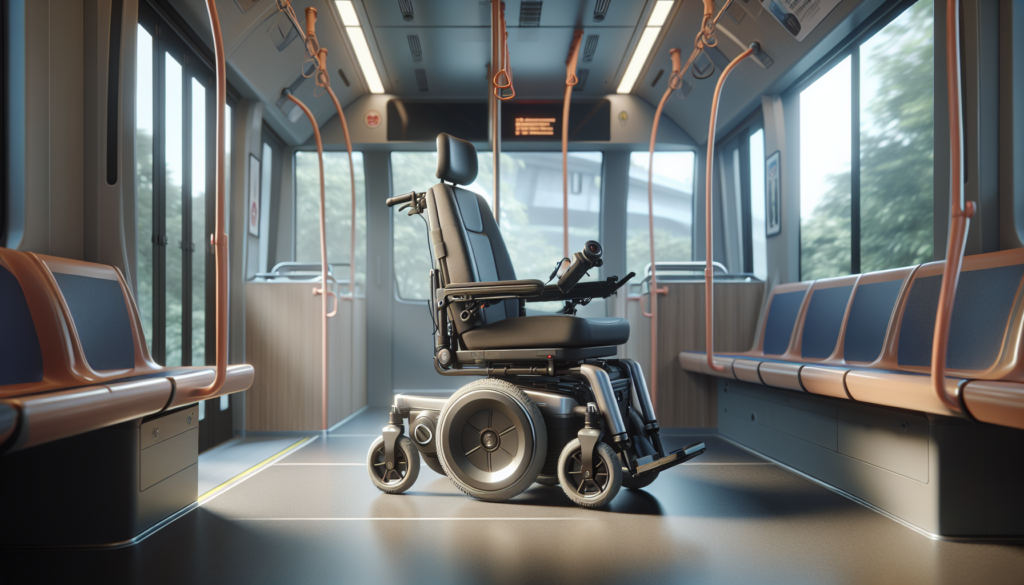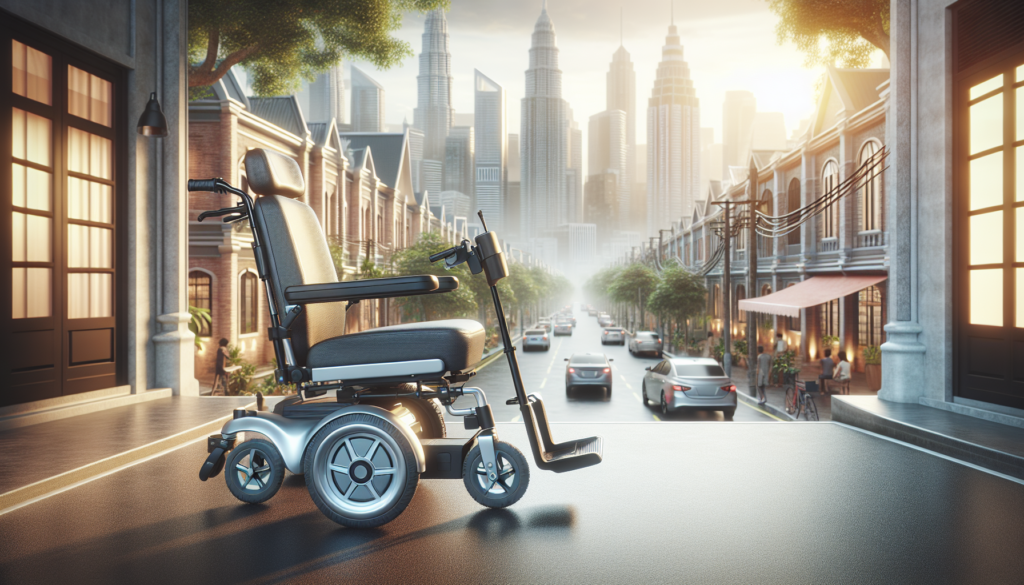
When it comes to choosing the right electric wheelchair, the decision often boils down to understanding the differences between lightweight and heavy-duty models. Lightweight electric wheelchairs, like the Edegree EW6 from EKO Life MY, are designed for effortless maneuverability and convenience, offering features such as a range per charge of 10-15km and a low weight of 14.8kg, making them ideal for indoor use and short trips.
On the other hand, heavy-duty options like the Stonbike TU-04 provide a robust design that can support larger weights and tackle tougher terrains, boasting a range of 25km and a weight capacity of up to 150kg. Each type has its own advantages, making this comparison crucial for users to find the perfect fit for their needs.
Understanding Electric Wheelchairs
Electric wheelchairs have become an essential mobility solution for individuals seeking independence and comfort. Understanding the differences between lightweight and heavy-duty electric wheelchairs can help users make informed choices based on their unique needs. Lightweight models, such as the Edegree EW6, weigh only 14.8kg and are designed to maneuver easily in tight spaces. With a maximum load of 100kg, they provide a range of 10-15km per charge and can achieve speeds of up to 8km/h, making them ideal for daily use and shorter distances. These wheelchairs are particularly advantageous for users who prioritize portability and ease of transport, as they can typically be folded or disassembled more easily than heavier counterparts.
In contrast, heavy-duty electric wheelchairs like the Stonbike TU-04 offer increased support and durability, accommodating a maximum load of 150kg. With a range of 25km per charge and a climbing ability of up to 25 degrees, these models cater to users requiring a more robust solution for varied terrain and longer distances. Though they weigh considerably more at 28kg, heavy-duty options feature powerful motors for better performance and stability, making them suitable for individuals with more significant mobility challenges. By weighing these factors when choosing an electric wheelchair, potential buyers can select the model that best fits their lifestyle and mobility requirements.
Key Differences: Weight and Load Capacity
When considering electric wheelchairs, weight and load capacity are crucial factors that can significantly impact usability and performance. The Edegree EW6 stands out as a lightweight option, weighing just 14.8kg with the included battery. Designed for users up to 100kg, it offers a reasonable range per charge of 10-15km, making it ideal for short outings. Its dual motor system provides a forward speed of up to 8km/h, which is suitable for those needing a bit more agility in urban environments.
In contrast, the Stonbike TU-04 is a heavy-duty electric wheelchair, weighing a hefty 28kg and capable of supporting users weighing up to 150kg. It boasts a longer range of 25km per charge, appealing to individuals requiring greater endurance for longer journeys. Additionally, it has an impressive climbing ability of up to 25°, offering enhanced accessibility on varied terrains. With a maximum speed of 6km/h, it may be slightly slower but assures stability and durability for heavier users. Understanding these key differences can help potential buyers choose the electric wheelchair that best meets their needs.
Battery Performance and Charging Time
When considering battery performance and charging time, the differences between lightweight and heavy-duty electric wheelchairs become evident. The Edegree EW6, a lightweight option, comes equipped with a 24V 10AH lithium battery that offers a range of 10-15km per charge. With a charging time of 6-8 hours, it is suitable for daily excursions without prolonged downtime. Despite its lower range, the Edegree’s dual motor 24v190w brushless motor provides reasonable forward and reverse speeds of up to 8km/h, making it a practical choice for users who prioritize maneuverability and ease.
On the other hand, the Stonbike TU-04 offers enhanced battery performance with a range of 25km per charge, thanks to its similar 24V 10AH lithium battery. Its charging time is significantly shorter, at just 3-5 hours, which is an attractive feature for users seeking a reliable option for extended use. With a heavier weight of 28kg and a maximum load capacity of 150kg, the Stonbike is designed for more demanding conditions, including a climbing ability of 25°. Hence, while both electric wheelchairs boast valuable features, users must weigh their individual needs for distance, charging time, and overall battery performance when making a selection.
Speed and Mobility Features
When evaluating electric wheelchairs, speed and mobility features play a crucial role in determining which model best suits your needs. The Edegree EW6 showcases a forward and reverse speed range of 0-8 km/h, allowing for agile movement in various environments. Its dual motor 24V 190w brushless motor supports a modest climbing ability of less than 10° degrees, making it ideal for flat terrains. Weighing in at 14.8kg, this lightweight wheelchair has a maximum load capacity of 100kg and features a 5-speed mode, providing ample flexibility while maneuvering without excessive strain on the user.
In contrast, the Stonbike TU-04 caters to those who require a robust option, offering a longer range per charge of 25km and superior climbing capability at 25° degrees. With a dual motor 24V 250w powerhouse, it reaches speeds of 0-6 km/h in both forward and reverse, allowing it to tackle more challenging terrains effectively. While it is heavier at 28kg and has a maximum load capacity of 150kg, its quicker charging time of 3-5 hours makes it convenient for daily use. Understanding these speed and mobility features can help in making the right choice between a lightweight and heavy-duty electric wheelchair.
Terrain and Climbing Abilities

When considering electric wheelchairs, terrain and climbing abilities are crucial factors that influence your overall mobility experience. Lightweight models such as the Edegree EW6 are designed for flat, even surfaces, offering a climbing ability of less than 10 degrees. This makes it ideal for indoor use or smooth pavements. With a weight of only 14.8 kg, the Edegree EW6 ensures that users can easily maneuver through tight spaces, making it perfect for urban environments. However, its limited climbing ability restricts its use on inclined terrains, which could be a concern for those living in hilly areas or needing to navigate ramps frequently.
On the other hand, heavy-duty models like the Stonbike TU-04 cater to users requiring robust performance across various terrains. With a climbing ability of 25 degrees, it can easily tackle ramps and hills, providing greater versatility for outdoor adventures. Weighing 28 kg, the Stonbike TU-04 can support a maximum load of 150 kg, making it perfect for users who may need extra stability and durability on uneven ground. Ultimately, the choice between lightweight and heavy-duty electric wheelchairs will depend on your specific mobility needs and the types of terrain you navigate daily.
Price Comparison and Value for Money
When considering the price of electric wheelchairs, it’s essential to evaluate their features against their costs to determine which provides the best value for money. For example, the Edegree EW6 is priced at RM 4,388 and offers a range of 10-15 km per charge, which can be ideal for short trips. With features like a lightweight design of 14.8 kg, a decent climbing ability of less than 10°, and dual motors, it presents a balanced option for those seeking mobility without the bulk. However, this model has limitations in terms of weight capacity and range compared to heavier models.
On the other hand, the Stonbike TU-04 is a heavy-duty option priced at RM 3,600, which boasts a more significant range of 25 km and a maximum load capacity of 150 kg. With a climbing ability of 25°, this chair is designed for more rugged use and can accommodate a wider array of needs. Given its quicker charging time of 3-5 hours and durable design, the Stonbike TU-04 may offer more long-term value for users requiring heavier support and extended usage. Ultimately, the choice between these two models depends on personal needs, expected usage, and budget considerations.
User Experience: Comfort and Usability
When choosing between lightweight and heavy-duty electric wheelchairs, user experience, comfort, and usability are paramount. Lightweight models, such as the Edegree EW6, are designed for easy maneuverability and transport. Weighing only 14.8kg, it provides a maximum load capacity of 100kg and boasts a range of 10-15km per charge. Users will appreciate the ability to navigate tight spaces and overcome minor obstacles with a forward speed of up to 8km/h. The Edegree EW6‘s compact dimensions and dual motor system ensure a more enjoyable ride, making it ideal for urban environments and indoor use. The adjustable speed settings enhance usability for users who may require different levels of control depending on their surroundings.
Choosing the Right Electric Wheelchair for Your Needs
When it comes to choosing the right electric wheelchair, understanding your specific needs is paramount. Lightweight models, such as the Edegree EW6, typically weigh around 14.8 kg and are designed for easy maneuverability and transport. They are ideal for individuals who prioritize portability and have moderate mobility requirements.
With a range of 10-15 km per charge and a climbing ability of less than 10 degrees, the Edegree EW6 provides sufficient performance for day-to-day activities in urban settings. The dual motor offers a comfortable ride with a maximum forward speed of 8 km/h, making it a suitable choice for casual users. However, it does have weight limitations, supporting a maximum load of 100 kg, which may not cater to individuals requiring a sturdier option.
On the other hand, heavy-duty electric wheelchairs like the Stonbike TU-04 cater to a different set of needs. Weighing 28 kg and able to support up to 150 kg, it’s designed for users who may require a more robust structure during daily activities. Although it has a slightly lower forward speed of 6 km/h and the same battery specifications with a range of 25 km, the TU-04 excels in its climbing ability, handling inclines of up to 25 degrees. This makes it perfect for users in varied terrains and those requiring higher weight capacity. Each option has unique benefits, requiring careful consideration of personal needs and lifestyle.
Finding the Perfect Electric Wheelchair for Your Needs

In conclusion, choosing between a lightweight and a heavy-duty electric wheelchair largely depends on your personal needs and lifestyle. The Edegree EW6 offers a more portable option with a quick charging time of 6-8 hours and a range of 10-15 km, making it an excellent choice for individuals seeking versatility and ease of transport. With a weight of only 14.8 kg, it’s perfect for those who are often on the move or need a chair that can be easily lifted and stored.
However, if you require something more robust, the Stonbike TU-04 is designed with durability and performance in mind. It can support a maximum load of 150 kg and has a superior climbing ability of 25°, making it ideal for rougher terrains or users who may need extra support and stability.
Ultimately, your decision will hinge on various factors, such as how often you plan to use the chair, the terrain you’ll be navigating, and your specific mobility requirements. Whether you prioritize portability with the Edegree EW6 or heavy-duty support with the Stonbike TU-04, understanding the distinctions between these models will ensure you make an informed choice that caters to your unique lifestyle. Remember, the right electric wheelchair can contribute significantly to your independence and daily enjoyment, so take the time to assess what aligns best with your needs.

Too little information to make a proper comment, hope it changes soon!
Thank you for sharing your thoughts, Jason! We appreciate your feedback. We’re always looking for ways to improve our content and provide more information. We’ll take your suggestions into consideration and hope to provide more detailed information soon! If you have any specific questions or topics you’d like to see covered, feel free to reach out to us at [email protected] or call us at +60 3-7890 3042.
I’m not sure what the blog is about, can you provide more context?
Hello Siti Rahayu, thank you for reaching out! It seems we didn’t provide a clear summary of the blog. To give you more context, our blog is about ‘Eko Life Malaysia – empowering bicycle, ebike, and escooter enthusiast through affordability, quality products, professional servicing, and forging communities.’ We’re focused on providing helpful tips and guides for eco-friendly enthusiasts. If you have any specific questions, feel free to ask and we’ll be happy to help!
Do you mind posting the actual topic of the blog post so we can engage in a discussion?
Apologies for the confusion, the actual topic of our latest blog post is ‘Ebike and E Scooter Safety Essentials – Tips for Malaysian Riders’. We’d love to discuss it with you now that the topic is clear. Please feel free to share your thoughts or concerns.